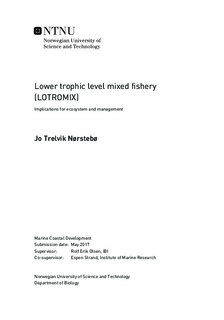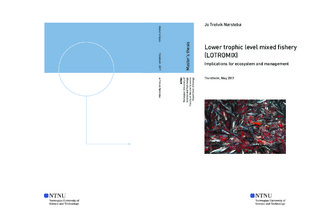| dc.description.abstract | There is an increasing interest in new marine resources for the production of aquaculture feed, to meet the increasing growth of the aquaculture industry. Marine species from lower trophic levels are a potential resource that could partly cover the increasing need for lipid and protein in aquaculture feed. The mesopelagic layer present a variety of species that is estimated to hold a vast biomass to harvest from, both globally and in the Norwegian Sea and fjords. Marine species at high latitudes are known for a high lipid content, with a potential for high concentrations of essential fatty acids and polyunsaturated fatty acids that are sought to incorporate into aquaculture feed.
The main objective of this present study was to quantify the species composition and assess the biomass distribution and production in the Norwegian Sea and fjords by trawling. The catch were further analysed, and the suitability catch from the mesopelagic layer would provide as a feed component was determined by analysing the total lipid content, and further assess the fatty acid and lipid class composition.
Catches from the mesopelagic layer showed high variation in densities of species at different season and location. With jellyfish and mesopelagic fish dominating the hauls conducted in the fjords, while krill and mesopelagic fish were dominating the hauls at sea. The mesopelagic fishes Maurolicus muelleri (Gmelin, 1789) and Benthosema glaciale (Reinhardt, 1837) had the highest lipid content of the analysed species from the mesopelagic layer, with mixed layer samples containing an average of 30.6 % lipid from dry weight, equivalent to 9.1 % lipid of wet weight. Placing a mixed catch from the mesopelagic layer between some of the pelagic fish species that are the main source of fishmeal and fish oil today in regards of lipid content. The highest lipid content was found in samples collected in the fjords during spring. The fatty acid composition of the catch contained favourable amounts of both PUFA and DHA+ EPA in all samples. With higher relative content found in smaller and leaner samples. The lipid class composition was satisfying, with the mixed layer samples containing well beneath the upper limit for the potentially limiting wax ester. | |

